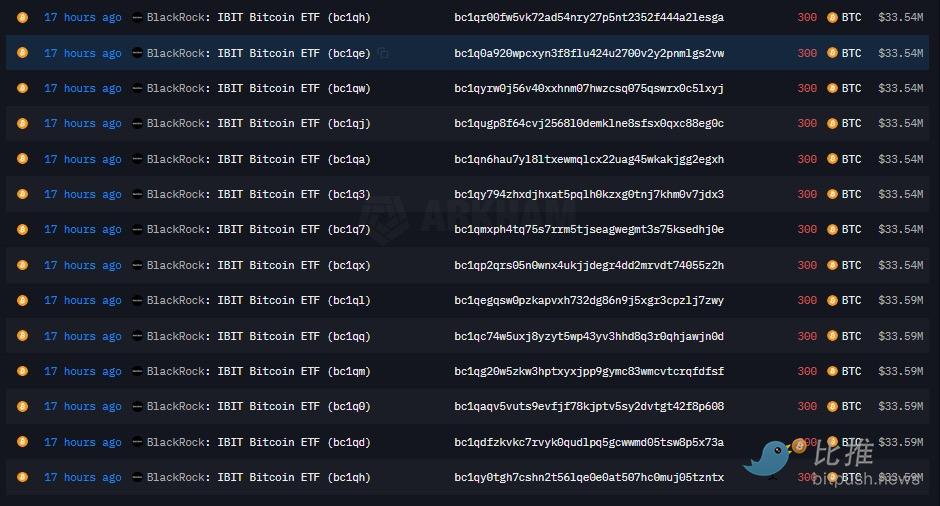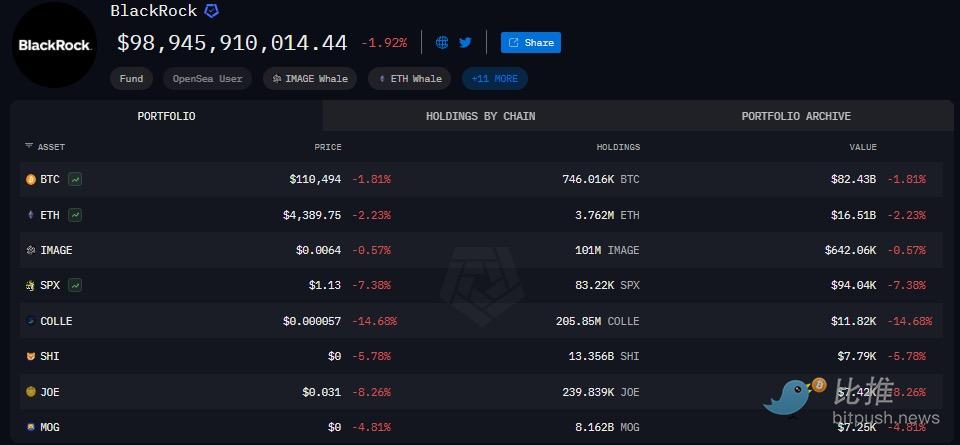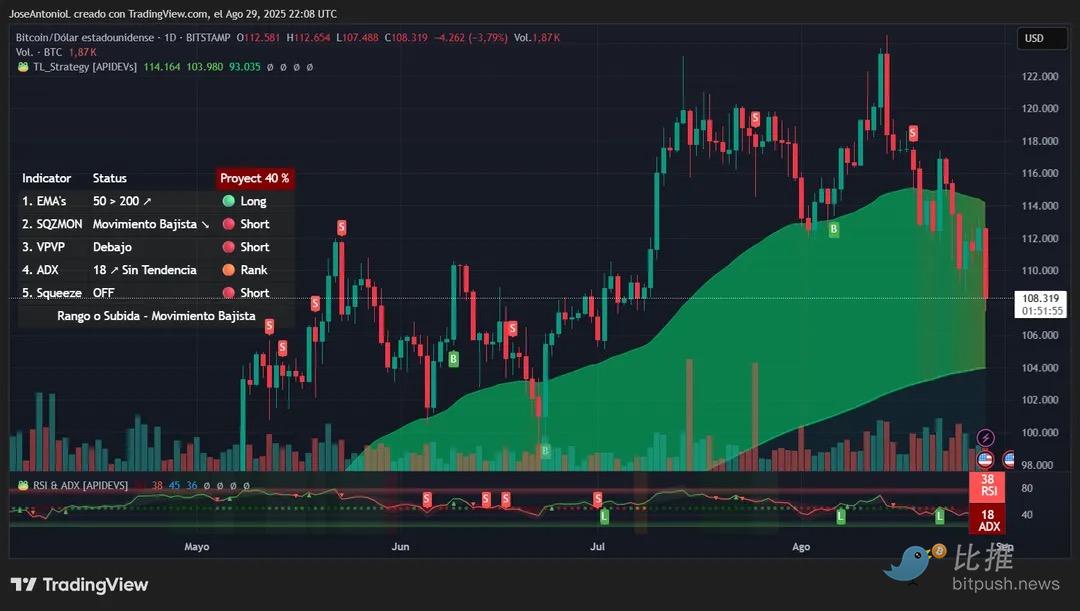Author: BitPush
August Market Review
Looking back at the entire month of August, the cryptocurrency market was once in a frenzy. Bitcoin hit a historic high of $124,457 on August 13, but in less than half a month, the price quickly fell below $108,000, reaching as low as $107,500 on August 29.

Over the past few years, Bitcoin has often experienced a sharp correction following a new all-time high. This is not an isolated event but a normalized correction of assets in a high-volatility environment. Mike Cahill, CEO of Douro Labs, stated: "The market will not always move in one direction; a 10% to 15% correction is extremely common for an asset like Bitcoin."
Direct Triggers for the Decline: Whale Selling and Chip Transfer
Whale "Rebalancing" Effect
On-chain data indicates that concentrated operations by whales may be a significant trigger for this round of correction.
On August 24, a wallet address associated with $5 billion worth of Bitcoin transferred approximately $800 million in BTC to the trading platform Hyperunit, drawing market attention. Just five days later, on August 29 at 10:57 AM, the address acted again, transferring a total of 2,000 Bitcoins in two transactions, worth over $216 million. Subsequently, these Bitcoins were split into smaller transactions and gradually exchanged for Ethereum, ultimately accumulating 42,750 ETH, which was quickly transferred out of the wallet.

Such actions not only create actual selling pressure but also impact market sentiment. Retail investors and following funds often mimic whale behavior, amplifying selling sentiment and pushing Bitcoin prices further down. Moreover, this is not an isolated case. In August of this year, other whales also engaged in similar asset conversions, with some long-term holders transferring over 80,000 Bitcoins in one go, setting a historical record.
Such large-scale rebalancing transactions have two direct impacts:
Supply Shock: A large amount of BTC entering the market in a short time creates downward price pressure.
Market Psychology: Retail and small to medium-sized funds often follow whale actions, exacerbating volatility.
Funds Flowing from Bitcoin to Ethereum
In response to the whale rebalancing, there is also a structural change in overall market funds. Data shows that since August, Bitcoin's market dominance has dropped from 66% to 57%, while Ethereum ETFs attracted a net inflow of up to $4 billion during the same period, far exceeding Bitcoin ETFs. Wall Street funds are increasingly viewing ETH as a "technology growth stock," rather than solely relying on Bitcoin as "digital gold."

There are multiple reasons behind this trend. First, Ethereum's potential growth in DeFi, stablecoins, and Web3 applications makes it more aligned with institutional investment logic. Second, some corporate finances have begun to include Ethereum in their asset allocation. Finally, the acceptance of Ethereum ETFs in the U.S. market is continuously increasing, especially with ETF applications involving staking yields expected to receive decisions as early as October, which may further drive fund inflows.
BlackRock's Large Rebalancing
Beyond whales, institutional operations are also profoundly impacting the market. BlackRock, the world's largest asset management company, was particularly active in August. On August 14, U.S. PPI data significantly exceeded expectations, causing market sentiment to plummet, but BlackRock went against the trend and made substantial purchases, increasing its holdings in iShares Bitcoin Trust and iShares Ethereum Trust by over $1 billion in BTC and ETH, including 4,428 Bitcoins and 105,900 Ethers.

Then, on August 18 and 19, BlackRock continued to increase its position, buying another $750 million in crypto assets in just two days. By August 29, the market observed multiple large transactions of 300 BTC being transferred out of wallets associated with BlackRock, each worth about $33.5 million. Although interpretations of these operations vary, the scale and pace resemble fund settlements and rebalancing for ETF products.

Currently, BlackRock manages nearly $98.95 billion in crypto assets, holding 746,016 Bitcoins (worth about $82.4 billion, accounting for 83%) and 3.76 million Ethers (about $16.5 billion, accounting for 16.7%). Although Bitcoin remains core, the proportion of Ethereum is rapidly increasing, indicating a strategic shift in this institution's asset allocation.
Macroeconomic Environment: Federal Reserve and Interest Rate Expectations
Beyond on-chain and institutional dynamics, the macroeconomic environment is also a significant backdrop suppressing Bitcoin prices. In mid-August, the U.S. Producer Price Index for July rose by 0.9% year-on-year, far exceeding the market expectation of 0.2%, further intensifying inflation concerns. In such an environment, high interest rate policies continue to suppress risk appetite, naturally placing downward pressure on Bitcoin.
However, Federal Reserve Chairman Jerome Powell hinted in late August that a rate cut might be initiated in September to address slowing economic growth. This signal is a double-edged sword for the market: in the short term, maintaining high interest rates keeps funds cautious; but once a rate cut is implemented, risk assets, including Bitcoin and Ethereum, are expected to receive new liquidity support.
Market Outlook: Bottoming Out or Second Dip?
From a technical perspective, Bitcoin has already lost the support level of $110,000 in August, with the next important threshold around $100,000, which is both the 200-day moving average and the previous breakout range. If it falls below this, the price may further dip to the range of $95,000 to $97,000. Ethereum is currently at $4,318, with key support below at $3,900; if this is lost, it will undermine the previous rebound structure.

Historical data shows that September is typically one of the weakest months for risk assets. Whether in U.S. stocks or cryptocurrencies, the average return in September is significantly lower than the annual average. If Bitcoin continues to correct during this period, it would not be surprising.
However, from a longer-term perspective, the shift in macro monetary policy and the continuous entry of institutions still provide solid support for the future performance of Bitcoin and Ethereum. The difference is that the tilt in fund structure is making ETH the new darling of Wall Street. BTC may still be "digital gold," but ETH is gradually taking on the role of "technology growth stock."
免责声明:本文章仅代表作者个人观点,不代表本平台的立场和观点。本文章仅供信息分享,不构成对任何人的任何投资建议。用户与作者之间的任何争议,与本平台无关。如网页中刊载的文章或图片涉及侵权,请提供相关的权利证明和身份证明发送邮件到support@aicoin.com,本平台相关工作人员将会进行核查。




